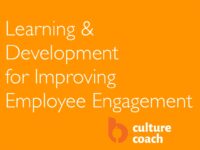Pat is a curious disruptor, connector, learner and leader. He is known for his work building high-performance teams and leadership, with a long history of world-class organization culture transformation success at scale, including with the largest medical technology company in the world.
After leaving his role as a healthcare executive, Pat has taken on a ‘passion project.’ Pat is the architect of an innovative leadership model that teaches emerging leaders to lead with their head, hands and heart. The 2-day leadership development workshop he runs, LEADING for RESULTS, is known for the unconventional approach Pat and his partners take in delivery of the program.
Since 2022, Pat has also been the Executive Director of The Curve Initiative, a non-profit organization started by best-selling author and influencer, Simon Sinek, aimed at improving the health of police culture.
Tell us about your organization.
LEADING for RESULTS is a program I wanted to build to address the leadership crisis in business. As the workforce demographics shift drastically, so do the expectations of employees for how they want to be led. All too often, managers think that merely leading with their heads – being strategic or visionary – is enough. Today, followership requires leaders to empower (lead with hands) and model authenticity and vulnerability (leading with heart). Leaders that inspire are able to get the best results, and there is a formula to do that: leading with head, hands and heart.
The Curve Initiative is a non-profit organization that supports the modernization of police through progressive leadership and culture. We imagine a world in which all people feel justice is administered with dignity, equity and fairness. You can learn more about this initiative on www.thecurve.org or follow The Curve on Linkedin.
What’s something new you or your team is focused on in the year ahead?
In the role of Leadership Trainer, we are focused on building communities that allow leadership growth to happen. In each of our programs, we establish a cohort that has the ability to stick together through a custom private web page that allows for a shared learning continuum.
For The Curve, 2023 has been a year of building. We have established operating committees on the Board of Directors to create focused delivery of our highest priority objectives. With this governance in place, we will accelerate progress in areas such as social media content development, fundraising and training/education.
What’s different about being a leader in 2023?
We have two primary focuses this year: streamlining our processes and building on success.
Technology is constantly evolving, and auditing, evaluating, and streamlining our processes is key. We’re always looking for ways to integrate systems to improve the user experience and/or reduce costs so that we can do what we do better and more effectively engage employees with learning that is exciting, interesting, and a good use of their time.
We also expanded our Bench program with a pilot called the Tech Bench, a job rotation program specific to technology. Unlike The Bench which you do alongside your day job, Tech Bench extracts a team member from their current role to spend 18 months in three to four different tech-focused areas. By the end, they will be moved into the tech area that is best aligned with their skills.The biggest difference is the mindset of those being let. The latest workforce trends tell us that the vast majority of employees are disengaged, emotionally disconnected and considering an exit (Gallup, Forbes). In the next few years, 75% of the workforce will be Millennials or younger. If managers do not evolve the way they lead, they will not have any followers. These skills can be taught and those investing in developing leaders now will reap the long-term rewards.
Good organizational culture is built by strong leadership, and organizations with good culture have 4x revenue acceleration. Investing in leadership development is not a ‘nice to have’ for business growth, it is a ‘need to have.’
Which new skills do leaders need in a more virtual work environment?
Leader skills related to emotional intelligence (EQ) are at a deficit and sharply declining. EQ deficits lead to gaps in trust. Generational differences play a role here as do hybrid/remote working environments. A HBR study shows that it takes 50% more time for remote teams to establish trust among members – the “leader” is charged with overcoming this trust gap and without the right EQ skills, that hurdle becomes enormous.
What are some of the challenges L&D teams are facing generally right now?
Finite-minded companies, short-term results orientation and poor leadership decision-making often leads to training budgets as the first to be cut. These budget cuts are coming for most L&D teams at a time when they can make significant strides in differentiating through investment in breakthrough solutions for the virtual environment (e.g. AI, VR). Driving transformation and budget cuts simultaneously generally comes with flight risk for top talent.
What are some of the barriers getting in the way of adoption/engagement with self-guided learning?
On the design side, limiting factors to creating engaging content include budget, creativity and collaboration. On the learning side, barriers include continuous distractions, poor prioritization and lack of skills/support to learn virtually limit adoption.
How do you drive engagement with and enrollment in self-guided development programs?
The 70-20-10 developmental model remains critical in self-guided development programs, meaning 10% of the learning should be “classroom” learning, 20% learning from others and 70% should be focused on experiential learning.
Self-guided doesn’t mean “alone.” Learners often abandon self-guided development because it is lonely – and people want to learn together.
The most effective self-guided development programs offer learning beyond the classroom, creating ways for people to collaborate and learn from each other while also gaining critical experiences.
How do you measure the impact of leadership development after they complete a program?
Varies – depending on the program, role and purpose. Several factors can be measured to understand impact, including assessment of program value from learner (NPS), manager reaction to changed behavior, changes in organizational health/culture scores from team, and rates of retention as well as promotion.
How do you enable target behaviors amongst leaders aligned with development programs?
Enabling target behaviors from leaders can be done through expectation setting and recognizing/modeling what good looks like. Nothing erodes credibility of a development program more quickly than when there is a misalignment between words and leader actions.
Visibility and access to model leaders is critical for development programs.
What applications of AI, if any, are you seeing in the L&D space today?
One of the most fascinating AI applications I’ve seen in the learning space is from a company called Storyfile. They are responsible for capturing a number of historically significant testimonials, such as that of holocaust survivors, and making their experience available to share through an AI-driven hologram which allows for conversational exchanges. This allows anyone in the world to have a conversation with a holocaust survivor – asking specific questions and getting direct answers. In the training space, this opens up incredible possibilities for experiential learning, particularly as it relates to role plays for skill-building.
Another exciting application of AI that I’ve been using is with a platform called Remesh. This is a bi-directional survey tool that allows for quick, accurate and contextual feedback collection from up to 1000 people at once. The AI component of the software allows for real-time feedback to be quickly aggregated to gain valuable insights with employees, customers or any other focus group.
And while I know I’m not here to pump up Bonfyre, your Culture Coach tool is remarkable. This Teams-friendly system for nudging managers is a perfect way we can be using AI to help develop leaders.
What do you see on the horizon here?
Politically, our world is a bit conflicted.
For leaders, a continued focus on cultural competency and inclusion is not optional—it’s mandatory. If leaders don’t possess cultural competency and make inclusion apparent, younger generations simply will check out and leave the organization.
This era of AI advancement will allow for significant differentiation on skill development. With remote and hybrid environments here to stay (bet me CEOs attempting to turn back the clock!), technology investments in education will drive competitive separation. Companies that neglect to invest in advanced technology to enrich the learning and development of their talent will fall behind, retaining those that have quietly-quit rather than the top talent that drives the business.
What skills are you finding relevant for leaders to help them connect with younger generations entering the workforce?
Millennials and Gen Z have expectations to be led with authenticity, flexibility and purpose. The way we communicate, the frequency of that communication and the degree of openness that we exhibit will determine how willing others are to offer trust. Without trust, an inspired team operating at peak performance is impossible.



 6 min
6 min




